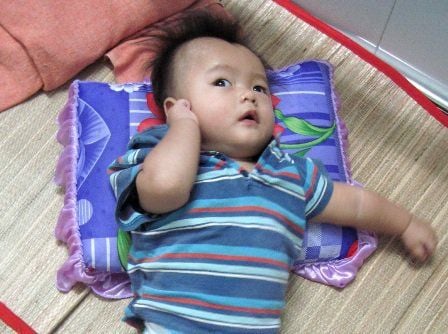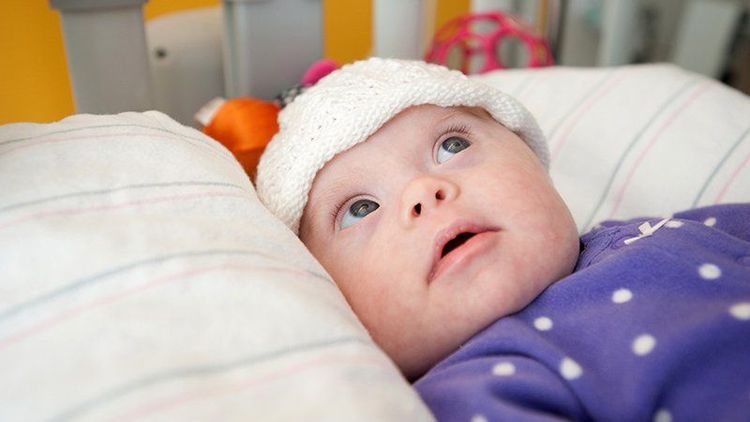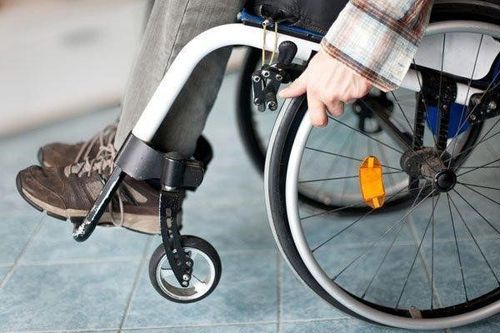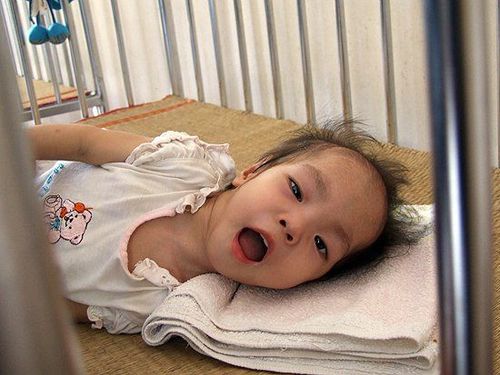This is an automatically translated article.
Cerebral palsy is a general term that describes a group of permanent disorders of motor and postural development that cause functional limitations due to non-progressive disorders occurring in the fetal brain or the brain in children. young children are developing. The motor disorders of cerebral palsy are often accompanied by sensory, perceptual, cognitive, communication and behavioral disturbances, seizures, and secondary musculoskeletal problems. Children with cerebral palsy need a lot of support from their parents, family and community.
1. 11 things to know about cerebral palsy
Cerebral palsy, to put it best, is a group of movement disorders that affect a child's ability to move and maintain balance and posture.
Cerebral palsy is the most common motor disability in children. About 1 in 345 children are identified as having cerebral palsy, according to estimates from the Centers for Disease Control and Prevention's Autism and Developmental Disabilities Monitoring (ADDM) Network. Centers for Disease Control and Prevention (CDC).
Cerebral palsy occurs more often in boys than in girls, and in black children more often than in white children.
The majority (about 75% - 85%) of children with cerebral palsy have spastic cerebral palsy. This means that the baby's muscles will be stiff, and inevitably, it may be difficult for the child to walk.
Cerebral palsy can be classified based on motor types, or localization, or severity, where:
Motor type: motor type refers to the observed movement disorder, and each Clinically closely related to the affected brain area: Spasticity: spasticity characterized by excessive stiffness in the muscles when the child tries to move or hold a position against gravity. Spasticity in children can vary depending on alertness, emotions, activity, posture, and pain. Dyskinesia/Hyperactivity: The dyskinesia/hyperactivity type involves increased muscle activity, which can cause excessive abnormal movements, excessive normal movements, or a combination of both. Dystonic/hyperactive cerebral palsy is characterized by abnormalities in muscle tone and presents with various motor disturbances including dystonia, chorea, and chorea. Ataxia: Ataxia is characterized by shaky movements and affects the patient's coordination and balance. This is the least common form of cerebral palsy. Combined motor forms: is cerebral palsy presenting with more than one motor form, such as spasticity and dystonia, and usually one motor form predominates. By localization: localization refers to the distribution of motor impairments or affected body parts. The motor defects can be unilateral (affects only one side of the body) or bilateral (affects both sides of the body): Unilateral cerebral palsy: Unilateral limb paralysis: affects one limb body, which can be an arm or a leg on the right or left side of the body. Hemiplegia: affects one half of the body, either the right or left side. Hands and feet are not necessarily equally affected. Bilateral cerebral palsy: Paraplegia: both legs are mainly affected. Children with paraplegia often have some impairment in upper limb function. Tri-limb paralysis: affects three limbs and does not affect the fourth. Quadriplegia: all four limbs are affected with the head, neck, and trunk also affected. By severity: Cerebral palsy can be described or classified according to the severity of the motor impairments. There are four recognized classification systems for motor function, communication, and eating. These categories relate to how a child with cerebral palsy moves (GMFCS), how the child uses his or her hands in daily activities (MACS), how the child communicates with familiar and unfamiliar people (CFCS), and the ability to safe eating habits (EDACS). More than half (about 50% - 60%) of children with cerebral palsy are able to walk on their own.
Many children with cerebral palsy have one or more other medical conditions or medical conditions. For example, about 4 in 10 children with cerebral palsy have epilepsy, or about 1 in 10 children with cerebral palsy have an autism spectrum disorder.

Phần lớn trường hợp bại não có liên quan tới tổn thương não bộ ở trước hoặc trong quá trình sinh đẻ, gọi là bại não bẩm sinh
Most cases of cerebral palsy are related to brain damage before or during childbirth, called congenital cerebral palsy. The following factors may increase the risk of congenital cerebral palsy:
Very low birth weight Babies born very prematurely Twins, or multiples Conceive with in vitro fertilization or other techniques Other assisted reproductive techniques Pregnant women with infections during pregnancy Children with kernicterus Having complications during childbirth. There is a small percentage of cerebral palsy caused by brain damage that occurs after 28 days of birth, called acquired cerebral palsy. The following factors may increase the risk of acquired cerebral palsy:
Having a brain infection (such as meningitis) Severe head trauma. The specific cause of cerebral palsy in most children is unknown.
Cerebral palsy is usually diagnosed during the first or second year of life. If a child has only mild symptoms, the diagnosis is sometimes difficult, and can only be confirmed as the child grows older.
With timely and appropriate support, children with cerebral palsy can fully grow up to be adults, live healthy, active lives and become part of society.
2. Early signs to recognize cerebral palsy

Chậm đạt các mốc phát triển vận động cũng là dấu hiệu của bại não
From birth to age 5, parents need to monitor whether their child is reaching motor development milestones, such as turning over, sitting up, standing up, and walking. A delay in reaching motor development milestones is also a sign of cerebral palsy (although children without cerebral palsy can also be late to these milestones). Here are the signs of suspected cerebral palsy:
For children from 3 to 6 months old: Pick up the baby when the baby is lying on his back, the baby's head is tilted back. See the child is stiff. See the baby soft. Babies seem to tilt their necks back too much when being held. When picked up, the baby's legs are crossed stiffly. For children 6 months and older: Unable to turn over. Can't touch two hands together. Difficulty bringing hands to mouth. Can only be reached with one hand, while the other is clenched. For babies 10 months and older: Crawling in a sideways position (crawl only with 1 arm and 1 leg, dragging the opposite limb) Moves around on their butt or jumps on their knees, but doesn't crawl with their whole body the four limbs. Vinmec International General Hospital has applied stem cell method to successfully treat many cases of cerebral palsy that seemed hopeless. The whole process of stem cell transplantation for cerebral palsy at Vinmec is performed very closely, ensuring safety in accordance with international standards. All surgeries are performed by leading experts and doctors with modern machinery and medical equipment. In addition, Vinmec has also developed a standard transplant procedure so that it can share experiences with colleagues, creating more opportunities for treatment for children with cerebral palsy across the country.
Please dial HOTLINE for more information or register for an appointment HERE. Download MyVinmec app to make appointments faster and to manage your bookings easily.
Article referenced source: cdc.gov












